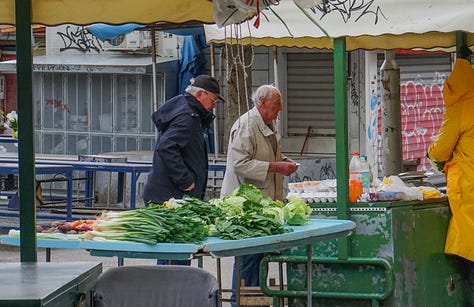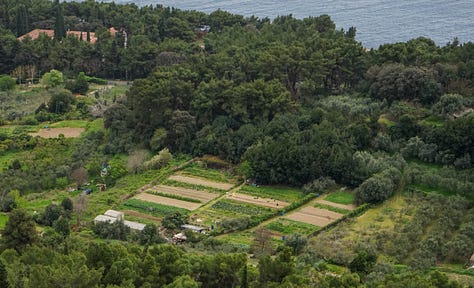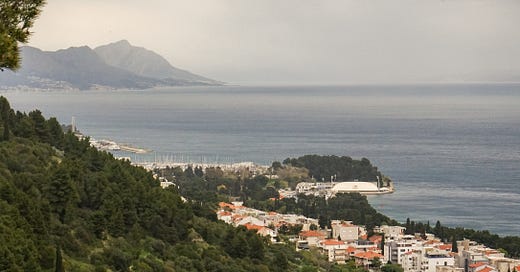Intermediate Economies Are Still Developing Too
Known for tourism, limited agricultural exports, and the remnants of subsistence farming, many small economies in the Balkans need clearer direction for sustainable growth.
We often look to two continents for economies and supply chains that need organizing — Africa and South America. But the same areas for improvement apply elsewhere too, especially in countries with new governance.
Take the Balkans, for example. Not struggling with extreme levels of food insecurity or poverty, but with populations living at their means — subsistence, with low wages.
I recently traveled to Croatia, not for anything especially productive, although I do believe dining, hiking, and sipping Croatian wines is a valuable use of time.
Croatia formed in 1991 after the end of communism in the south, then became a member of the European Union in 2013. It is now just 35 years young. It sits among the remnants and echoes of the empires before it: Yugoslavia, Germany, fascist Italians from across the sea (whom Croatians still don’t particularly like). In ancient times, the Romans, and the Croatian Empire itself.
The Dalmatian mountain region has a lot going for it, like every geographical region, but its economic growth is only now beginning, and there can’t be an expectation of hands-off support without risking being left behind.
Croatia is one of seven countries with a trade deficit in both intra- and extra-EU trade, based on 2023 numbers. It boasts impressive industrial trade but has productive agricultural land that screams for investment and modernization. Its largest exports are electricity, packaged medicaments, electrical transformers, refined petroleum, and special-purpose ships. Also trailing behind: tourism. These are not exactly industries that employ a significant portion of the population; they are industries disconnected from a people’s economy.
Croatia does not export a dominant agricultural commodity, lacks a specialized labor force, and its small farmers, though deeply rooted in the land, are aging and not scaling up. The economy is not in crisis, but it doesn’t receive the attention it deserves. Without intentional support, it risks being left behind.
How could it be left behind? The six-million-person nation is in demographic decline, with a declining replacement rate of just 1.53 children per woman. The language, noted as one of Europe’s most challenging to learn, is still spoken, but risks fading as the population shrinks.
One long hike I took revealed the basic structure of Balkan agriculture, where the scale of farming is significantly smaller and physically segmented by stone fences. From vegetables to small-scale cattle operations, the stone property markers from the 1600s are still in use today. It is a system known as a karst economy, serving as both property lines and a way to rationalize fertile land resources.
The trail I walked along was not actively used, but when driving through the countryside, I saw the same stone boundaries being used to enclose small herds of cattle.

The country is not known for large-scale production or has cracked agriculture trade, but it known for quality. Croatia has technology and investments from Central Europe, but the new governance has not fully integrated into the economy, adopting such technology. It has taken time for the nation’s agriculture to emerge from the closed system and market of the former Yugoslavia into the open EU market.
Being a former Yugoslavian nation, where two-thirds of the population still lived during that era, and where nearly 7 percent of the population farms, the standards of business are different. One will not see everyone participating in taxes, listening to EU regulations, and the country itself does not make it a priority in enforcing all EU directives. The family business structures is also common, often sharing income and power across many members, a remise of a mafia system. Croatia enjoys being located in Europe, while avoiding certain European Union structures.
In the town center of Split, Croatia, there is a farmers market full of Mediterranean goods. The salespeople are elderly, still working their plots of land, producing fruits and vegetables. Even if it is just one basket, they join the hundred others on a good day, selling their produce as supplemental income to their pensions, if they choose to participate.



Of course, there are larger produce farms and mainstream supermarkets, but in every village across Croatia, an aging population grows food to create a local food market — though never at a scale large enough for export.
“There is not many of us—so, quality over quantity,” one local told me.
One product that does find itself known around the world is wine — but even then, it is rarely exported. Prošek, a dessert wine aged five years, sees just 1,000 bottles produced annually. It holds one of the EU’s 600 Geographic Indications, a kind of international marketing and intellectual property protection for food and drink.
When will these products reach other markets, or Croatia find its agricultural niche? I believe that will happen when its economy more closely aligns with the systems of the European Union. It shouldn’t be our position to force development on economies that aren’t ready for change, but when we talk about agricultural development as researchers and economists, we must not assume the European Commission has it all under control. These conversations should include Africa and Europe, Asia and South America alike.


People’s adoption of a new treaty, the EU, is an untold story, or at least a slow one. Remnants of the past are still in use. But perhaps this is a story still unfolding, especially for the Balkan nations and other intermediate economies that should not be left behind in a rapidly growing world.
Side note of news I’m reading:
The European Union is entering into their year of negotiation of their Common Agricultural Policy (CAP). Some things are at stake, including a subsidy shakeup.
Foot and mouth disease (FMD) in cattle spreads across central and eastern Europe.
When federal research cuts closed down USAID funded global agriculture research programs, one anonymous funder is keeping the Illinois soybean innovation lab open for a year.
American Beverage Association is looking for a Federal Affairs Director. Quite the time to be in Washington D.C. standing up for sugary beverages.
Raising Eyebrows:
The USDA released a program and complaint form for farmers and ranchers harmed by the Biden administration. The term is called “lawfare” which a basic internet search tells me is the application of law to achieve political ends, often in a way that skirts traditional warfare. I wonder how farmer push legal complaints against the current administration?




